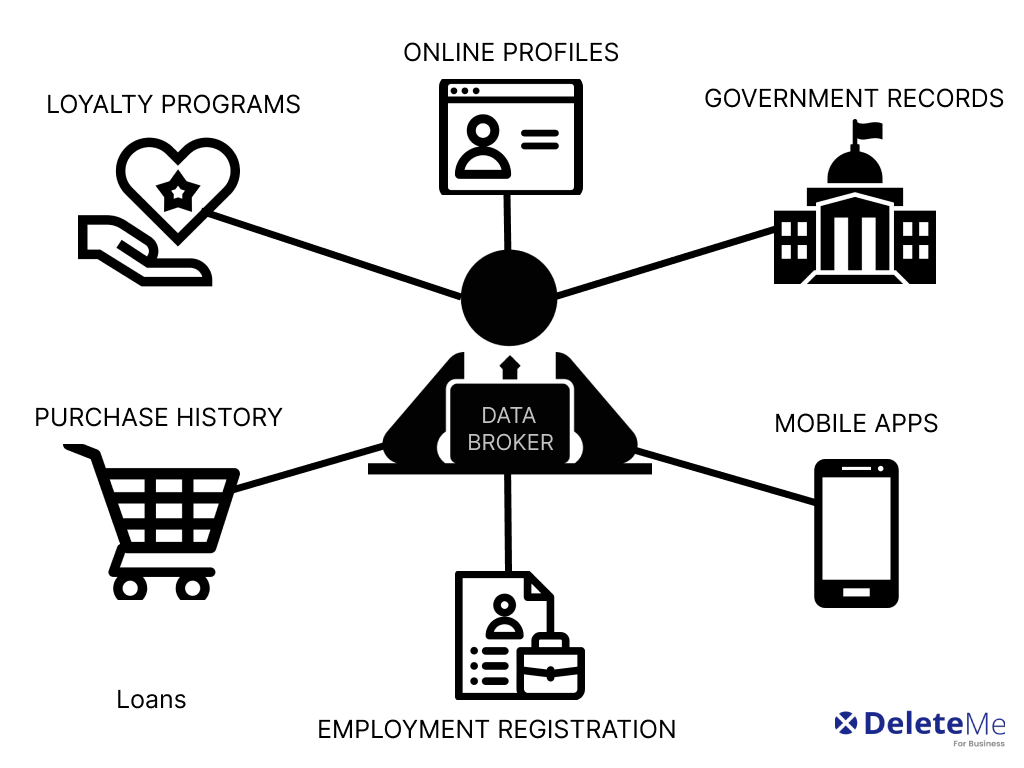Exploring the Consequences of Ransomware Attacks on Data Brokers and T…
페이지 정보
작성자 Brittany 작성일24-10-24 07:47조회4회 댓글0건
관련링크
본문

In recent years, malicious software incidents have surged, leading to profound consequences for companies involved in information collection and distribution. Organizations that rely heavily on the acquisition and sale of personal and corporate information are particularly vulnerable to these threats. Often, the repercussions go beyond immediate financial losses. Trust, reputation, and operational stability hang in the balance.
Many entities find themselves navigating a complex landscape filled with risks. Security measures must be continuously updated and reinforced. This is not merely about preventing unauthorized access; it’s also about preserving the integrity of sensitive files. A single breach can instigate a domino effect, jeopardizing relationships with clients and stakeholders.
Moreover, as technology evolves, so do the tactics of cybercriminals. They are becoming increasingly sophisticated, employing various strategies to exploit weaknesses in systems. Companies must invest substantial resources to stay one step ahead. Unfortunately, this can divert attention from their core missions, impacting overall productivity.
In this turbulent environment, safeguarding valuable repositories of information has never been more critical. Falling victim to such threats can lead to catastrophic outcomes. Entities must develop robust contingency plans to address potential breaches effectively. Educating employees about cybersecurity best practices is equally essential, as human error often plays a significant role in these crises.
Ultimately, the future of information vendors hinges on their ability to adapt to these shifting dynamics. Those who proactively embrace innovative security protocols will emerge stronger, while others may struggle to survive. Addressing vulnerabilities is not optional; it’s a necessity for sustained growth in an increasingly perilous digital landscape.
Understanding Ransomware Threats
In today's digital age, various entities are increasingly vulnerable to sophisticated cybercriminal tactics aimed at extorting sensitive information. Organizations, large and small, find themselves in a precarious situation as malicious actors deploy advanced techniques to infiltrate systems. Attacks can occur at any moment, often leaving victims scrambling to recover lost assets and data. As a result, understanding these threats is more crucial than ever for maintaining security.
Cybercriminals often exploit weaknesses in security protocols. They may use phishing emails, opt out radaris malicious links, or unsecured networks to gain access. Once inside, they can encrypt files, rendering them inaccessible to legitimate users. Victims are then faced with an alarming ultimatum: pay a ransom to regain access or face potential permanent data loss.
Factors contributing to targeting strategies include:
- Industry vulnerability
- The value of the information held
- Existing security measures
- Previous incident history
Organizations that hold large volumes of personal or proprietary information often become prime targets. This has led to an unsettling landscape where the stakes are high, not only in terms of financial loss but also regarding reputation and customer trust. The ongoing evolution of these threats necessitates that companies remain vigilant and proactive in their defenses.
As attackers adapt and refine their strategies, understanding how they operate becomes paramount. Cybercriminals invest considerable time developing effective methods for infiltrating systems, and their sophistication is increasing. Often, these attacks are highly coordinated and can bypass traditional security measures, catching organizations off guard and unprepared. In this climate of uncertainty, it is essential for entities to be well-informed and equipped to respond effectively.
How Data Brokers Are Targeted
In today’s digital landscape, various entities face relentless threats from malicious actors. These threats can lead to serious repercussions, affecting operations and even the integrity of sensitive information. Many organizations find themselves in the crosshairs of cybercriminals striving to exploit weaknesses for personal gain. It's a game of cat and mouse, where the stakes are continually rising, and the attackers are evolving.
Cybercriminals meticulously choose their targets, often focusing on those with vast repositories of valuable information. They seek vulnerabilities, employing sophisticated techniques to infiltrate systems. This approach allows for access to confidential details, making the targets attractive to those looking to monetize illicitly acquired data. Phishing attacks, social engineering, and exploiting software flaws are common tactics.
Once access is obtained, the malicious actors can wreak havoc. They often proceed to encrypt invaluable information, holding it hostage. Fear and urgency drive the victim's response, compelling many to comply with demands. Despite the financial implications, some organizations may feel they have no choice but to pay the ransom and recover their critical assets.
Furthermore, the aftermath of such intrusions can be staggering. Reputational damage often lingers long after the incident, impacting customer trust and loyalty. Legal repercussions might follow, along with regulatory scrutiny that adds another layer of complication. Companies may find themselves grappling with litigation costs and additional expenses relating to recovery efforts.
Ultimately, understanding how these entities are targeted is vital for developing effective defenses. Awareness of potential attack vectors can significantly mitigate risks. Organizations must remain vigilant to protect themselves against these constantly shifting threats, ensuring their infrastructure is fortified and their information secure.
Consequences of Data Breaches
Breaches in information security can lead to significant repercussions that extend beyond immediate losses. Organizations often face a myriad of challenges that impact their operations, reputation, and financial stability. These situations can result in a loss of trust from clients and partners. Moreover, the aftermath may require extensive resources to address vulnerabilities.
For many firms, the financial fallout can be staggering. This includes not only costs associated with recovery efforts but also potential fines from regulatory bodies. Companies may need to invest heavily in security enhancements and monitoring systems to prevent future incidents. Public perception can shift dramatically; what was once viewed as a reliable organization could suddenly appear vulnerable and untrustworthy.
Legal actions often accompany such events, leading to lawsuits from affected individuals and entities.
Insurance premiums might increase, further straining budgets. Organizations might find themselves entangled in complex litigation processes, which divert attention from core business activities. Additionally, customers may choose to sever ties, resulting in lost revenue streams. These financial ramifications can linger long after the breach itself has been contained.
Furthermore, companies must navigate a landscape of evolving regulations that often arise in response to such crises. Compliance becomes an ongoing challenge, requiring dedicated resources and constant vigilance. It’s not just about fixing the breach; it's about ensuring that systems are fortified against similar threats in the future. Continuous audits, mandatory reporting, and increased transparency are now commonplace as part of recovery strategies.
In conclusion, the consequences of breaches are multifaceted and profound. From immediate financial impacts to long-term reputational damage, organizations must be prepared to face a variety of challenges following such incidents. Addressing these issues requires not only technical solutions but also a strategic approach that involves stakeholders at every level to ensure resilience and recovery in the face of adversity.
Financial Implications for Data Brokers
When navigating the treacherous waters of digital security, organizations face an array of challenges that can carry significant financial repercussions. Protecting sensitive information is paramount, and every breach can lead to unforeseen costs. From immediate recovery expenses to long-term reputational damage, financial strain can escalate quickly. Understanding these implications is crucial for any entity involved in the trade of personal information.
First, the expenses associated with rectifying security vulnerabilities can be staggering. This includes fees for incident response teams and technology upgrades to prevent future attacks. Moreover, companies often find themselves spending substantial amounts on legal counsel to navigate the regulatory landscape. In addition to these direct costs, there are often fines imposed by regulatory bodies due to non-compliance with privacy laws.
Reputation also has a price. Customers may lose trust and choose to sever ties. In a world where brand loyalty can make or break a company, this shift can be devastating. A tarnished image often translates to reduced revenue and a deteriorating customer base. Furthermore, market shares might diminish as competitors capitalize on your misfortune.
Long-term financial viability hinges on proactive measures. Establishing robust cybersecurity frameworks is not merely an expense; it is an investment in future stability. If a company can demonstrate its commitment to protecting client information, it will likely retain its clientele and potentially attract new business. Companies that fail to prioritize security may find themselves embroiled in a cycle of losses.
Ultimately, the financial landscape for organizations engaged in personal information exchange is fraught with peril. A single incident can have cascading effects that ripple through every facet of business operations. As companies fortify defenses, they must continuously evaluate and adapt strategies to remain resilient against evolving threats. Neglecting this aspect can spell disaster, leading to potential bankruptcy or a need for major restructuring.
To mitigate risks, organizations are encouraged to allocate resources wisely. By fostering a culture of security awareness among employees, they can significantly reduce the chance of human error–one of the most common avenues for breaches. Investing in training programs equips staff with the knowledge needed to recognize potential threats and respond appropriately.
As threats evolve, so must financial strategies. Organizations must stay attuned to market developments and adjust their risk management practices accordingly. Engaging with cybersecurity experts can provide insights into emerging trends and help tailor preventive measures. Financial implications are not just about responding to incidents; they involve preemptive planning and strategic foresight.
Regulatory Responses to Cyber Attacks

In today's interconnected world, organizations must navigate a complex landscape of cyber threats. Various entities, from small businesses to large corporations, face challenges that require careful planning and strategic responses. Governments and institutions globally are developing frameworks to bolster defenses and ensure accountability. Regulations can serve as a double-edged sword. They can provide protection, but they also impose considerable requirements on organizations.
Understanding these frameworks is crucial for maintaining compliance and safeguarding systems. New laws are emerging, addressing the evolving nature of cyber threats. Many jurisdictions are enacting regulations that mandate specific security measures. These measures might include strict protocols for reporting incidents and protecting sensitive information.
Penalties for non-compliance can be severe. Organizations may face hefty fines, which could jeopardize their financial stability. Some regulations also require organizations to conduct regular audits to assess vulnerabilities. This proactive stance aims to prevent incidents before they occur.
Furthermore, cooperation between sectors is essential for effective responses. Governments often collaborate with private organizations to share intelligence and resources. This partnership facilitates improved incident response measures, creating a more resilient environment. For instance, public-private programs focus on enhancing cybersecurity awareness among employees.
As technology evolves, so too must regulations. Legislators are now considering aspects such as artificial intelligence, cloud computing, and the Internet of Things. These innovations present unique challenges that require adaptable approaches. Continuous revisions of existing frameworks ensure they remain relevant and effective.
Education plays a vital role in regulatory responses. Organizations are encouraged to train their personnel in best practices for information security. This training can lower susceptibility to breaches significantly. Moreover, companies must stay informed about emerging threats and regulatory changes. By fostering a culture of security awareness, organizations can improve their overall defenses.
In conclusion, regulatory responses to cyber threats are essential for protecting sensitive information. Balancing compliance with operational demands is a challenge for many organizations. However, embracing these regulations will ultimately pave the way for a more secure digital landscape. This ongoing commitment to security and accountability is crucial for long-term success in a world fraught with cyber risks.
Case Studies of Ransomware Attacks


Examining specific instances of cyber incidents reveals patterns and vulnerabilities commonly exploited by malicious actors. Understanding these events provides valuable insights into the tactics employed and the repercussions faced by organizations. Each case tells a story of oversight, reaction, and recovery, often emphasizing the urgent need for enhanced security measures.
One notable example is the attack on a major healthcare provider. This incident disrupted essential services, impacting patient care significantly. Attackers infiltrated the system, encrypting critical files and demanding payment. The facility faced a daunting choice: comply with demands or risk losing access to vital information. Ultimately, they opted to restore operations through backups, incurring substantial costs in the process.
Another striking case involved a large municipal government. Cybercriminals targeted their databases, paralyzing operations for several days. Employees encountered locked systems and inaccessible records, leading to widespread frustration and inefficiency. Authorities promptly initiated an investigation while simultaneously seeking to recover lost data. This incident shed light on the vulnerabilities of public sector entities, emphasizing the need for rigorous cybersecurity protocols.
Moreover, a prominent educational institution experienced a breach that exposed sensitive student data. After the attack, the institution faced not only reputational damage but also legal challenges from affected parties. The investigation uncovered that basic security measures had been overlooked, leaving the system open to infiltration. Lessons learned from this event highlighted the importance of continual training and awareness among staff.
These case studies reflect the diverse approaches taken by attackers and the varying impacts on organizations. Each scenario underscores a crucial point: the necessity of preparedness and resilience in the face of evolving threats. By analyzing these detailed accounts, industries can derive actionable insights, seeking to fortify their defenses against future occurrences.
Case Studies of Ransomware Attacks
Examining real-life incidents provides valuable insights into the nature of cyber threats. Each attack tells a story, revealing methods and impacts. Understanding these events helps organizations better prepare for potential risks. Let’s explore a selection of notable cases.
One of the most notorious examples occurred in 2020, where a well-known international corporation suffered a massive breach. Hackers infiltrated their systems, encrypting files and demanding a substantial payment for release. This incident not only disrupted operations but also eroded client trust significantly. The fallout was profound; employees faced weeks of downtime while critical data remained inaccessible. Ultimately, this attack highlighted vulnerabilities in their security framework.
In another case, a healthcare provider found itself in a similar predicament. Cybercriminals targeted sensitive health records, endangering patient confidentiality. Operations were paralyzed, and the organization had to divert resources to manage the crisis. They quickly realized the gravity of their information security lapses. As a result, many patients were understandably alarmed, and regulatory bodies took a keen interest in the situation.
Moreover, a local municipality faced severe consequences after falling victim to an attack. Essential services halted, causing significant inconvenience to residents. Officials had to make tough decisions about system backups and restoring functionality. The decision to refuse the ransom payment led to prolonged recovery efforts that tested public patience. This scenario underlined the importance of having robust contingency plans.
Through these examples, various patterns emerge. Attackers often exploit weak points, choosing targets based on potential payoff. Organizations that prioritize cybersecurity, investing in training and protection, usually fare better. By learning from these stories, businesses can arm themselves against similar threats in the future.
Future Trends in Cybersecurity
In an ever-evolving digital landscape, challenges in information protection are becoming more complex. Innovations emerge regularly, driving the need for advanced strategies. Organizations must remain vigilant against increasing threats. Cybersecurity is no longer a staff-focused issue; rather, it has become a fundamental pillar for every institution.
As technology develops, so do techniques used by cybercriminals. It's essential to stay aware of these changes. Here are some of the trends anticipated in the near future:
- Artificial Intelligence (AI) and Machine Learning (ML) in threat detection
- Increased focus on Zero Trust Architecture
- Greater emphasis on cloud security solutions
- Regulatory compliance and the evolving legal landscape
- Expansion of security automation tools
One significant trend involves leveraging AI and ML, which are being utilized to identify patterns and anomalies in network behavior. These technologies can analyze vast amounts of data quickly, allowing organizations to detect threats before they escalate. Furthermore, as reliance on cloud services grows, there is a pressing need for robust security measures tailored to protect sensitive information stored in these environments.
Zero Trust Architecture is gaining traction as businesses realize that traditional perimeter-based defense systems are no longer sufficient. This approach assumes that threats can be both external and internal, hence necessitating strict access controls and continuous verification of user identities.
Moreover, regulatory challenges are increasing. Organizations must navigate complex compliance requirements, which are evolving in response to rising cyber incidents. Adapting to these legal frameworks can be daunting but essential for maintaining customer trust and avoiding penalties.
Automation in security processes is another emerging trend. Automated systems can respond to threats in real-time, significantly reducing response times and minimizing potential damage. Integrating these tools within existing infrastructures can enhance overall resilience.
In conclusion, the landscape of cybersecurity is shifting. Adaptation, innovation, and continuous learning are vital for organizations to safeguard their assets effectively. As future trends unfold, proactive measures will determine whether institutions can withstand the growing tide of cyber threats.

 실시간예약
실시간예약





